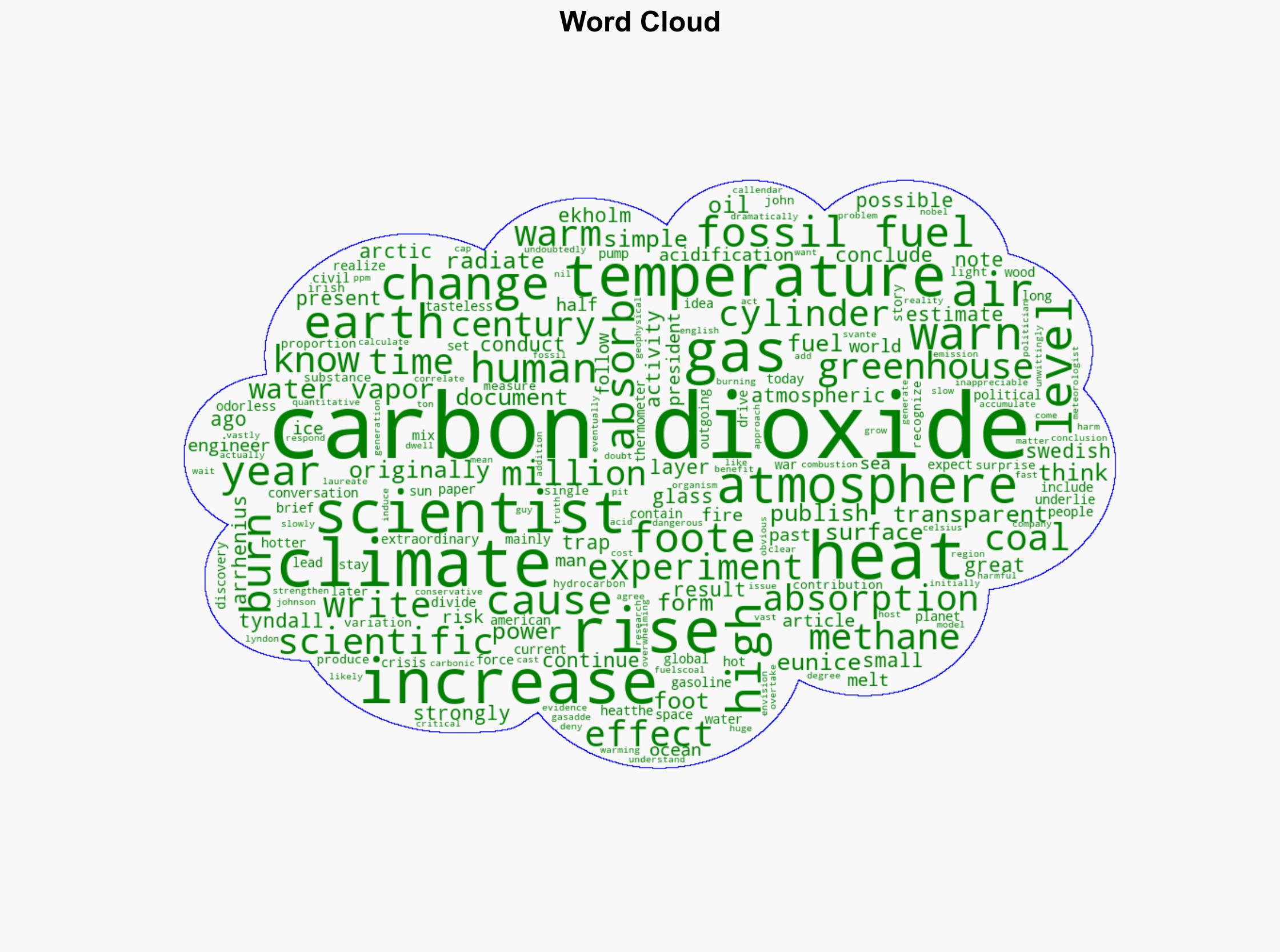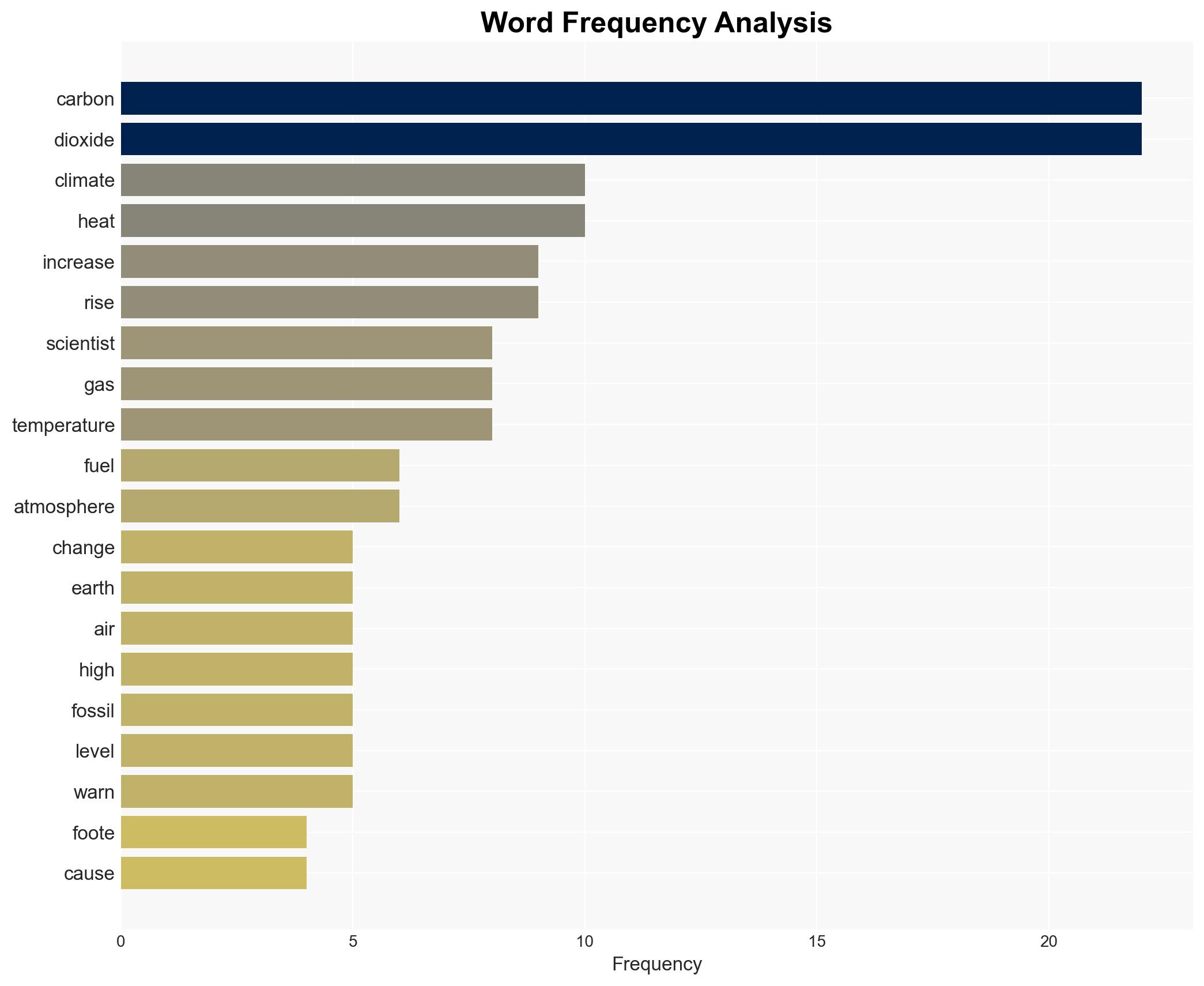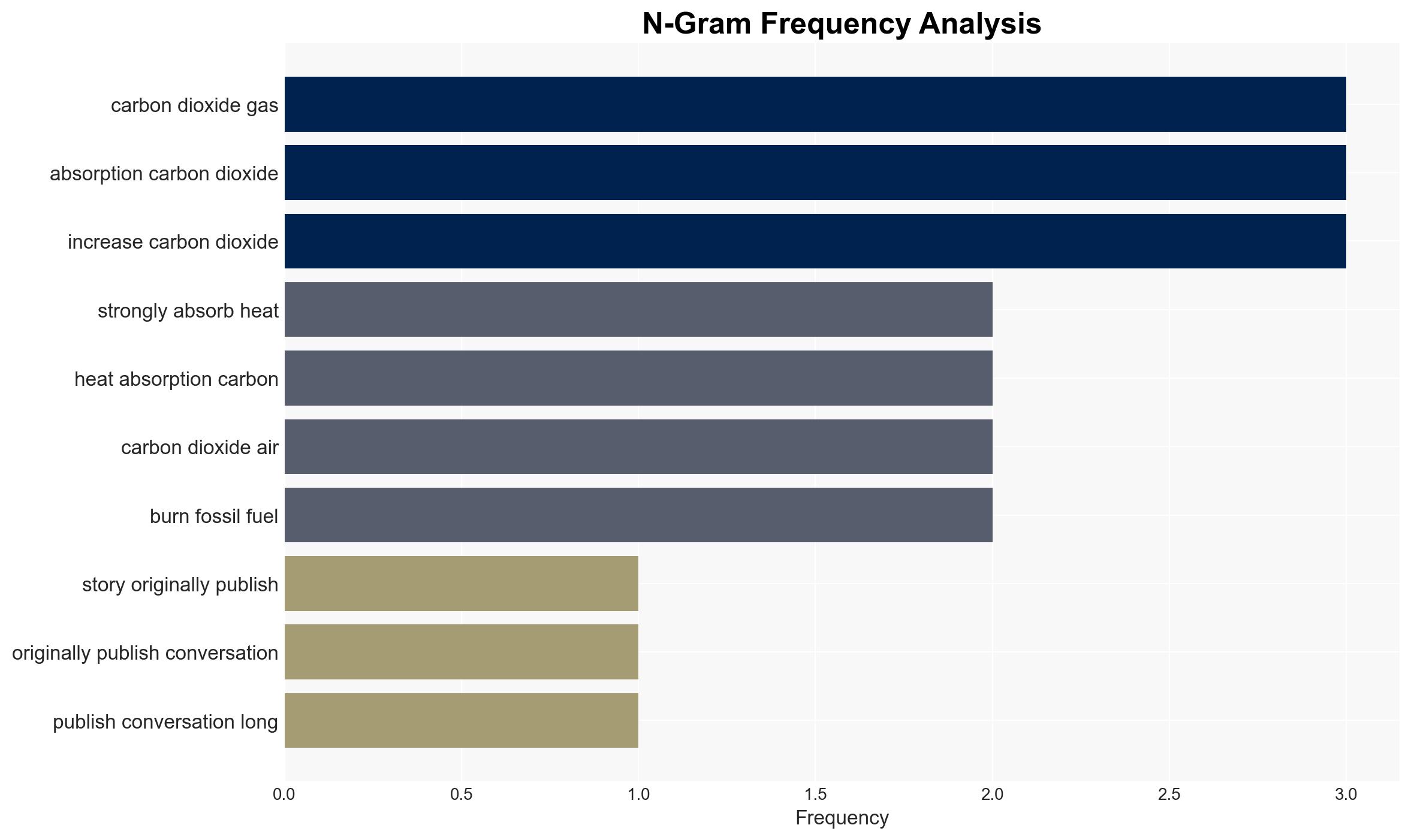Scientists Understood Physics of Climate Change in the 1800sThanks to a Woman Named Eunice Foote – Ms. Magazine
Published on: 2025-03-31
Intelligence Report: Scientists Understood Physics of Climate Change in the 1800s Thanks to a Woman Named Eunice Foote – Ms. Magazine
1. BLUF (Bottom Line Up Front)
The understanding of climate change physics dates back to the 1800s, initiated by Eunice Foote’s discovery of carbon dioxide’s heat absorption properties. Her work laid the foundation for subsequent scientific advancements in climate science. The recognition of carbon dioxide as a key driver of global warming underscores the urgent need for strategic actions to mitigate climate change impacts. Immediate policy and technological interventions are recommended to address the increasing atmospheric carbon dioxide levels.
2. Detailed Analysis
The following structured analytic techniques have been applied for this analysis:
General Analysis
Eunice Foote’s early experiments demonstrated the significant heat absorption capacity of carbon dioxide, highlighting its role in the greenhouse effect. Subsequent research by individuals such as John Tyndall and Svante Arrhenius expanded on these findings, quantifying the impact of carbon dioxide and other gases on climate change. The historical trajectory of scientific understanding reveals a consistent pattern of increasing awareness and evidence of human-induced climate change, primarily through fossil fuel combustion.
3. Implications and Strategic Risks
The continued rise in atmospheric carbon dioxide poses substantial risks to global stability, including increased temperatures, melting ice caps, rising sea levels, and ocean acidification. These changes threaten national security, economic interests, and regional stability by exacerbating resource scarcity, triggering migration, and increasing the frequency of extreme weather events. The historical context provided by early scientific discoveries emphasizes the long-standing nature of these risks.
4. Recommendations and Outlook
Recommendations:
- Implement regulatory measures to reduce carbon emissions and promote renewable energy sources.
- Invest in technological innovations aimed at carbon capture and storage.
- Enhance public awareness and education on climate change impacts and mitigation strategies.
Outlook:
In a best-case scenario, global cooperation and technological advancements lead to significant reductions in carbon emissions, stabilizing climate impacts. A worst-case scenario involves continued reliance on fossil fuels, resulting in severe climate disruptions. The most likely outcome depends on the timely implementation of effective policies and international collaboration.
5. Key Individuals and Entities
The report mentions significant individuals such as Eunice Foote, John Tyndall, Svante Arrhenius, Guy Callendar, and Nil Ekholm. Their contributions have been pivotal in advancing the understanding of climate change and its underlying causes.





